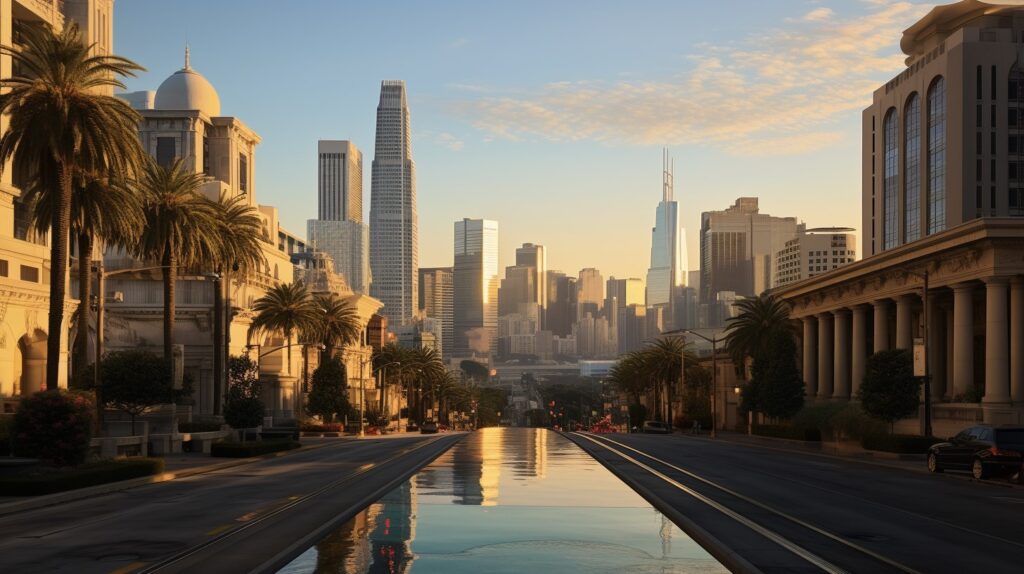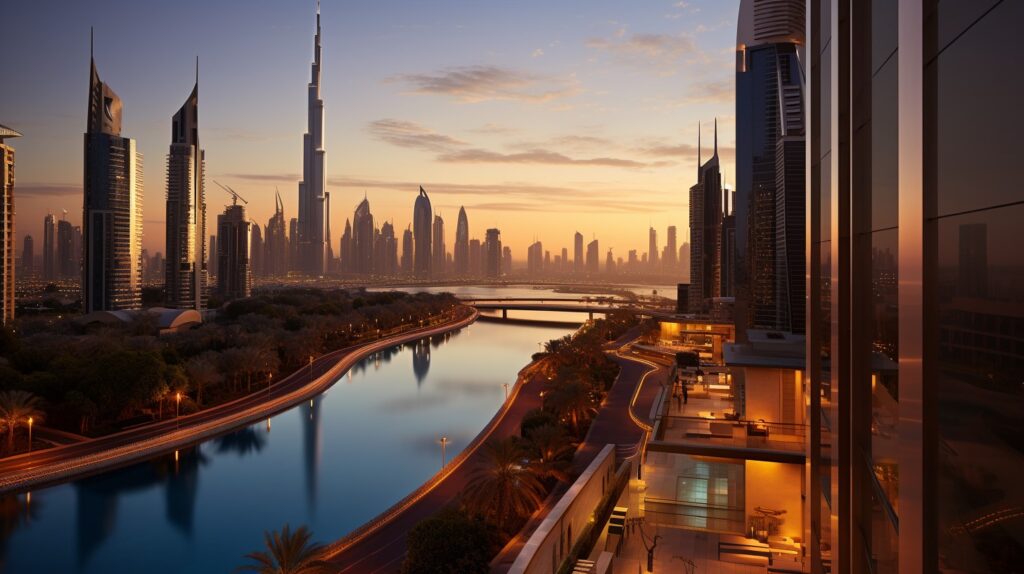Introduction
Dubai, synonymous with luxury, innovation, and architectural marvels, has a real estate market as dynamic and fascinating as its skyline. From the tranquil shores of the Arabian Gulf to the bustling streets of Downtown Dubai, the city’s property landscape tells a story of remarkable transformation and ambition. This article embarks on a journey through the historical evolution of Dubai’s real estate market, tracing its path from the humble beginnings of a desert trading post to becoming a global hub for luxury living and high-end properties. It’s a tale of vision, resilience, and the relentless pursuit of excellence that has shaped one of the world’s most vibrant real estate markets.
Early Beginnings: Pre-Oil Era
Long before the glitz and glamour, Dubai’s landscape was vastly different. The city’s early real estate was modest, primarily comprised of traditional houses made from palm fronds (Barasti) and coral stones.
The Landscape of Dubai Before the Discovery of Oil: Dubai was a small fishing and pearl diving community in the pre-oil era. The architecture was designed to suit the harsh desert climate, with homes clustered around Dubai Creek. These structures were simple yet functional, reflecting the Bedouin lifestyle and the limited resources.
Early Forms of Property and Land Use: Land use in early Dubai was communal, with families living in close-knit quarters. The properties were primarily residential, with souks (markets) playing a central role in the community’s economic and social life. The real estate of this era was a far cry from the luxurious villas and skyscrapers that would later define Dubai’s skyline.
Post-Oil Discovery: The First Wave of Development
The discovery of oil in the 1960s was a turning point in Dubai’s history, setting the stage for a series of transformative developments in its real estate sector.
Impact of Oil Discovery on Urban Development: The newfound wealth from oil exports led to rapid urbanization. Dubai’s rulers, particularly Sheikh Rashid bin Saeed Al Maktoum, invested heavily in infrastructure, laying the groundwork for modern real estate development.
Initial Real Estate Developments and Foreign Investment: This era saw the construction of Dubai’s first airport, port, and modern highways, which attracted foreign businesses and expatriates. The influx of foreign workers created a demand for new housing types, leading to the development of the first commercial and residential buildings in areas like Deira and Bur Dubai.

The 1980s and 1990s: Foundations of Modern Real Estate
These decades were crucial in shaping Dubai’s modern real estate landscape, with the government implementing policies to catalyze its growth.
Economic Diversification and Its Impact on Real Estate: As Dubai diversified its economy beyond oil, the real estate sector became a key area of focus. The government encouraged foreign investment and introduced laws facilitating property ownership and development.
Key Developments and Government Policies: The establishment of free zones like the Jebel Ali Free Zone in the 1980s provided foreign investors with tax benefits and ownership advantages. This period also saw the development of landmark projects like the Dubai World Trade Centre, symbolizing the city’s growing economic prowess.
The Boom of the Early 21st Century
The turn of the millennium marked the beginning of an unprecedented boom in Dubai’s real estate market, characterized by rapid growth, ambitious projects, and a surge in international interest.
The Rapid Growth and Expansion of Dubai’s Real Estate in the 2000s: The early 2000s witnessed a dramatic transformation in Dubai’s real estate landscape. Fueled by increasing oil revenues and a liberalized property market, the city embarked on ambitious construction projects that would soon become global icons. This period saw the rise of luxurious residential complexes, state-of-the-art commercial spaces, and leisure facilities that catered to a growing population of expatriates and affluent tourists.
Iconic Projects and International Appeal: Dubai’s real estate market during this era was marked by iconic projects pushing architectural design and luxury boundaries. The Palm Jumeirah, an artificial archipelago shaped like a palm tree, symbolizes Dubai’s innovative spirit and luxury living. The Burj Al Arab, touted as the world’s only ‘seven-star’ hotel, set new standards in luxury hospitality. These developments transformed the city’s skyline and cemented Dubai’s position as a premier global destination for luxury real estate.
Global Financial Crisis and Its Aftermath
The global financial crisis 2008 profoundly impacted Dubai’s real estate market, leading to a significant downturn and uncertainty.
The Impact of the 2008 Financial Crisis on Dubai’s Real Estate: The crisis brought Dubai’s booming real estate market to a sudden halt. Property prices plummeted, construction projects were stalled or canceled, and investor confidence was severely shaken. The crisis exposed the market’s over-reliance on speculative investments and the need for more sustainable development practices.
Market Recovery and Stabilization Efforts: In response to the crisis, the Dubai government and real estate developers implemented measures to stabilize the market and restore investor confidence. These included restructuring debt, introducing more stringent regulations, and focusing on completing existing projects. The market gradually recovered, aided by Dubai’s growing economy and its status as a regional business hub.
Recent Trends and Developments
In recent years, Dubai’s real estate market has shown signs of maturity, characterized by more sustainable growth and a focus on meeting the needs of a diverse population.
Current Trends in Dubai’s Real Estate Market: Dubai’s current real estate market is marked by a more cautious approach to development. There is a greater focus on affordable housing and community-oriented projects catering to the needs of middle-income residents. The market has also seen a rise in demand for sustainable and smart homes, reflecting a global trend towards environmentally friendly living.
Emerging Areas and Types of Properties: New areas in Dubai, such as Dubai Hills Estate and Jumeirah Village Circle, are gaining popularity for their community-centric designs and green spaces. There is also a growing interest in properties that offer a blend of residential and commercial amenities, providing a more integrated living experience.

Sustainable Development and Future Outlook
Sustainability has become a key focus in Dubai’s real estate market, emphasizing creating environmentally responsible developments that contribute to residents’ well-being.
Focus on Sustainable and Environmentally Friendly Developments: Dubai’s vision for the future includes developing sustainable urban areas. Initiatives like the Dubai Green Building Regulations and the Sustainable City are examples of this commitment. These developments are designed to minimize environmental impact through renewable energy, water conservation systems, and green spaces.
Predictions for the Future of Dubai’s Real Estate Market: Dubai’s real estate market is expected to continue evolving towards sustainability and innovation. The market is likely to see greater technology integration in property development, with smart homes and intelligent building systems becoming the norm. Additionally, a growing emphasis is on creating mixed-use developments that offer a balanced lifestyle, combining residential, commercial, and recreational spaces.
